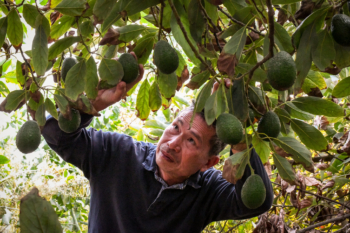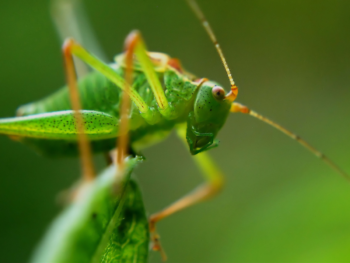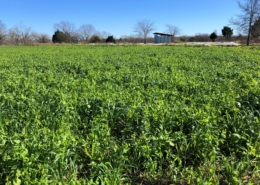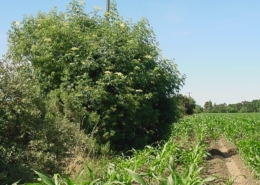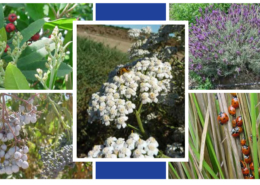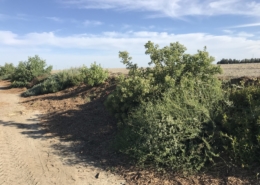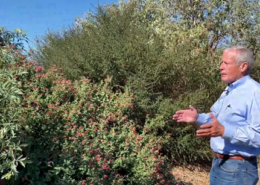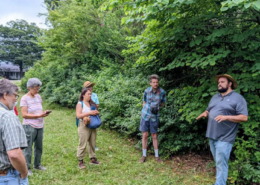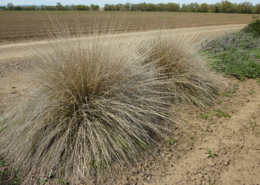Hedgerows
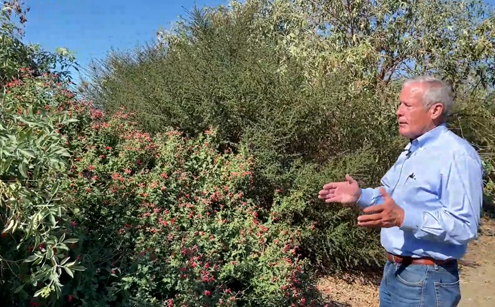 Well-designed hedgerows can provide a farm with several benefits and should be designed with a goal of having at least one of several species planted in flower throughout the year, if possible. Hedgerows provide nectar and pollen resources for beneficial insects (pollinators, predators, and parasitic wasps and flies), act as wind and dust barriers, reduce wind and rain erosion, provide visual barriers, and enhance the beauty of a farm—an important consideration for agritourism. The ground beneath the hedgerows, being undisturbed once the hedgerow is planted, can provide habitat for native bees. Eighty-five percent of native bees are ground nesters, but much of their native nesting ground has been plowed up.
Well-designed hedgerows can provide a farm with several benefits and should be designed with a goal of having at least one of several species planted in flower throughout the year, if possible. Hedgerows provide nectar and pollen resources for beneficial insects (pollinators, predators, and parasitic wasps and flies), act as wind and dust barriers, reduce wind and rain erosion, provide visual barriers, and enhance the beauty of a farm—an important consideration for agritourism. The ground beneath the hedgerows, being undisturbed once the hedgerow is planted, can provide habitat for native bees. Eighty-five percent of native bees are ground nesters, but much of their native nesting ground has been plowed up.
Hedgerows can be located along farm roads, along farm borders, between fields, along fence lines—anywhere the farmer desires, as long as there is access to irrigation water during at least the first few years to get the hedgerow established. It is important to start with a weed-free area and after planting the hedgerow, controlling weeds is an important consideration. Natural mulches (wood chips, straw) or weed cloth are both options to reduce weed competition with the new hedgerow. Learn more in the practical ATTRA resources listed here.
Related Topics
Staff Experts


